What Are Cotton Patch Geese?
Origin
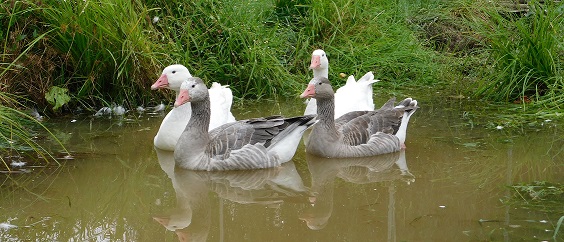
Cotton Patch geese are a landrace instead of a standardized breed. This means that local populations with variations in size and appearance depending on the different areas. But, there is enough consistency to identify as having the same origin. A standard breed does not allow the variation in size and appearance like a landrace.
Their name is a modern term for an old use in the south – weeding the cotton or tobacco fields. Before the 1950s, they were called Tobacco geese, Cotton Patch geese, and other names that fit their job description on individual farms. On most farms, they were just called geese because they were an important food source for the homesteads in the north and south.
All Cotton Patch geese must have a traced lineage to a historical flock with demonstrated sexual dimorphism. This means their gender can be determined by their color when they hatch. Males and females have two different color patterns.
Patch geese must have a traced lineage to a historical flock with demonstrated sexual dimorphism. This means their gender can be determined by their color when they hatch. Males and females have two different color patterns.
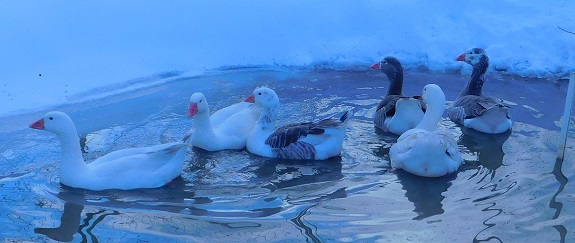
Coloring
All of the Cotton Patch geese legs and bills range from reddish-pink, pink, pink-orange, or orange depending on the different lines. The Philadelphia line’s legs and bills are deep reddish-pink in the winter and lighter in the summer.
The Goose(Female)
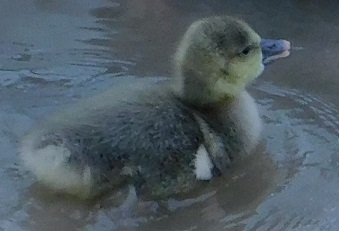
A solid gosling has dark gray-green down over the back and head with a dusty gray-yellow underbelly. If they are a pied-carrier they will also have white wingtips. If they are pied or saddleback, they have the dark gray-green only on their head and back with the dusty gray-yellow on their neck and under-belly.
A solid gosling has dark gray-green down over the back and head with a dusty gray-yellow underbelly. If they are a pied-carrier they will also have white wingtips. If they are pied or saddleback, they have the dark gray-green only on their head and back with the dusty gray-yellow on their neck and under-belly.
The pied or saddleback goose is white with gray patches over the back, neck, or head. The patch has white lines where feathers meet and can be of various sizes. Generally, if they have a patch on their head it begins disappearing with every molt. Just as the solids get more white around their face, it seems the same thing happens with the patch on their head.
The Gander(Male)
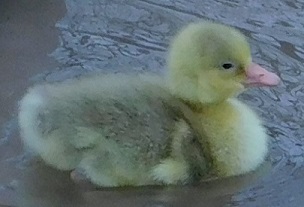
The Cotton Patch ganders are white as adults, with blue eyes. Their true colors are only in the first weeks after hatching. A solid gander gosling has pale gray over the back, neck, and head blending into a yellow underbelly. Just as in the goose, if they have white wingtips it indicates a pied carrier. But if they are pied they have a gray head and back with a bright yellow over the meck and under-belly.
As adults, they can have a few light to dark gray wings or tail feathers. I had a gander with a gray spot on his neck so I named him Dr. Spot. Sadly after several molts, it disappeared. So now he is Dr. Spotless.
The goose chooses a sheltered area for their nesting site. Some owners, like myself, provide small huts for nesting. I pile them full of hay so they can nest. It is amazing how much loose hay is needed for a good nest. This provides insulation to protect the eggs and keep them warm. They start making their nests several weeks before laying eggs.
Nesting & Eggs
The goose lays an egg approximately every other day starting in mid-February. She carefully covers the eggs with nesting material after each additional egg. This helps protect the eggs from predators and keeps them warmer. When the goose has laid a clutch of six to twelve eggs, she will set. I have one goose that lays 3 eggs per week until June. Then she sets. The incubation time is approximately 28 days sometimes up to 35 days. The gander stays close to protect the goose setting on her eggs.
hatching
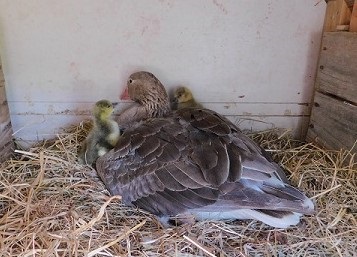
When the goslings start hatching and have dried, they’ll peak out from under mom’s feathers. The goose usually sets for two to three days after the first hatches to give all the eggs time to hatch. The first goslings may wander away from the goose, so often the gander will step in to care for his gosling. He may even take them out to eat or drink.
The Cotton Patch goose generally continues to set on the eggs for two to three days after the first goslings hatch to allow all the time for all the eggs to hatch. The first goslings start popping out from under the goose when fully dry.
All the while the gander is on guard outside. If you can get past the gander, anyone attempting to check the eggs or handle a gosling will deal with a protective, angry goose. She will hiss and lunge at the intruder. The gander will attack from the other side. They are more respectful of us because they are used to us as their owners. But at this time they may still land a bite of us. When they no longer have young to protect the aggressiveness disappears. Some people have very tame geese that will not be aggressive when they have goslings.
Exiting the Nest
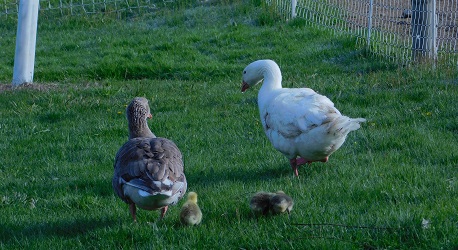
The goslings are ushered out of the nest even if it is 30-degree weather to eat grass under the watchful eye of both parents. Within an hour or so the parents lead them to the water. They allow them to drink and play around in the water before going to eat more grass. Before long they are back at the water but this time after playing at the water’s edge the goose sets sail across the pond. The goslings follow the goose while the gander brings up the rear.
Within an hour or so the parents led them to the water. They allowed them to drink and play around in the water before going to eat more grass. Before long they were back at the water but this time after playing at the water’s edge the goose set sail across the pond. This encouraged them to follow while the gander brought up the rear ready to wrangle any wayward gosling across the pond.
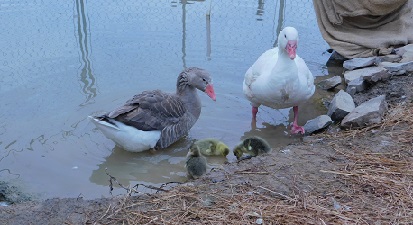
The goslings are surprisingly durable when it comes to temperature. I am amazed at how long they spend eating grass and swimming in the pond. They take short stints under the goose or gander for warm-up. The gander is on guard duty most of the time. But the goose takes her turn at watch duty to allow the gander nap time just as the adult geese take turns watching while the others snooze.
Ganders make excellent foster parents to our goslings hatched in an incubator. Females are less likely to accept them. If they have recently hatched goslings, a goose may accept the gosling when it is slipped in at night. Temperament varies with each goose. Some will geese them at any time, others will either neglect or outright kill them. I had some goslings by a pair of geese because I had some young incubator-hatched goslings in a chicken tractor near the pair of geese. They longingly ogled them for over two weeks until I tried putting them together and they became very loving parents. I was surprised because that goose is not typically friendly to other goslings.
